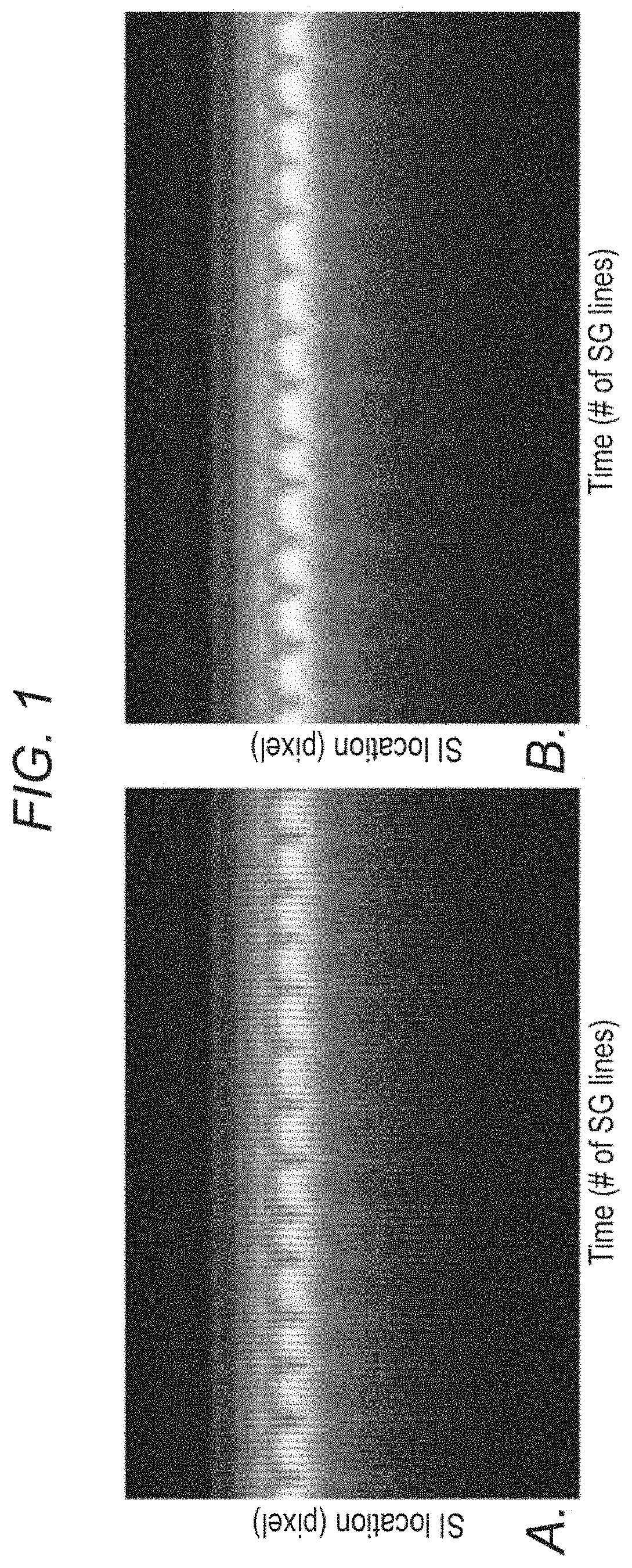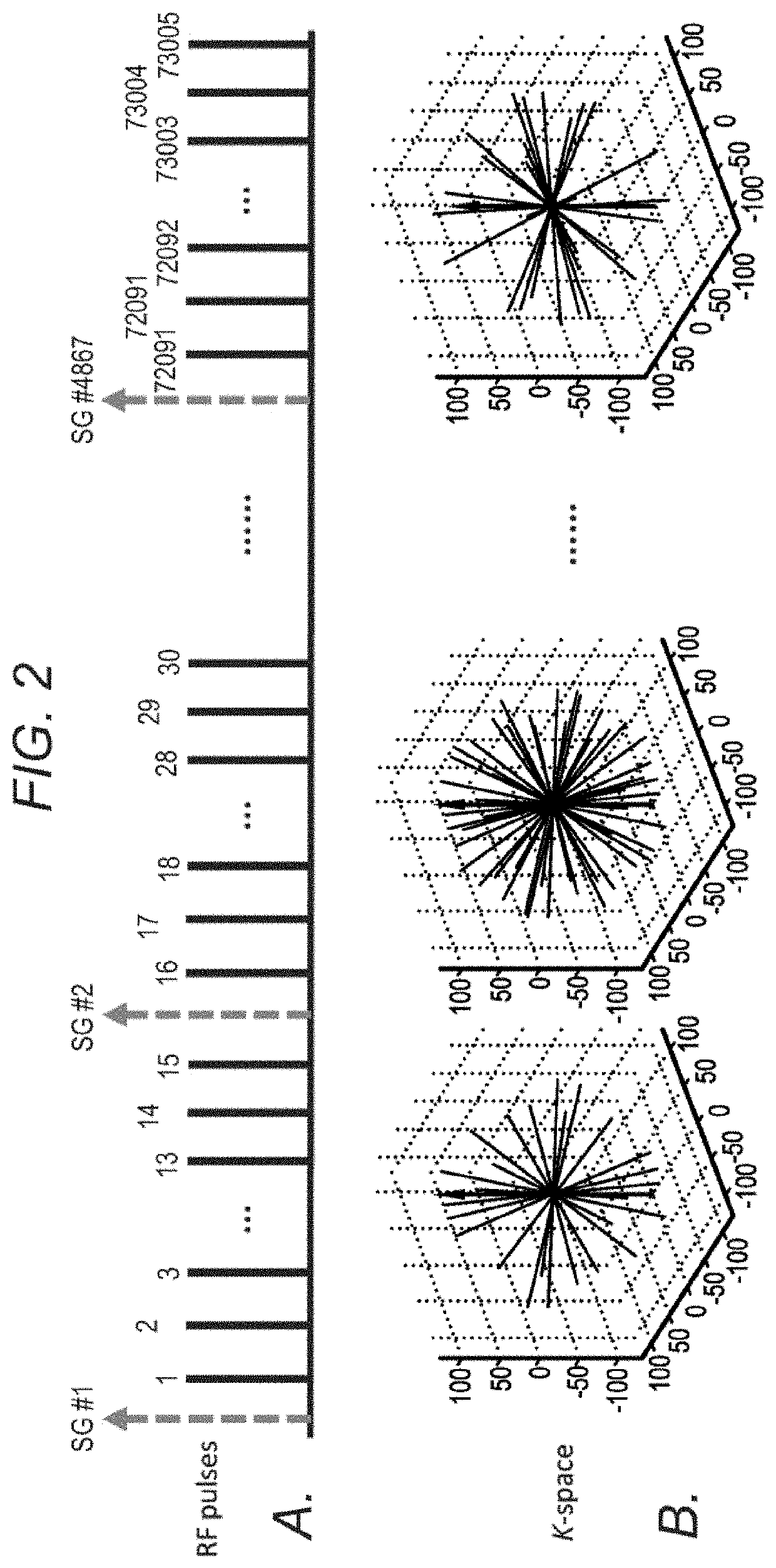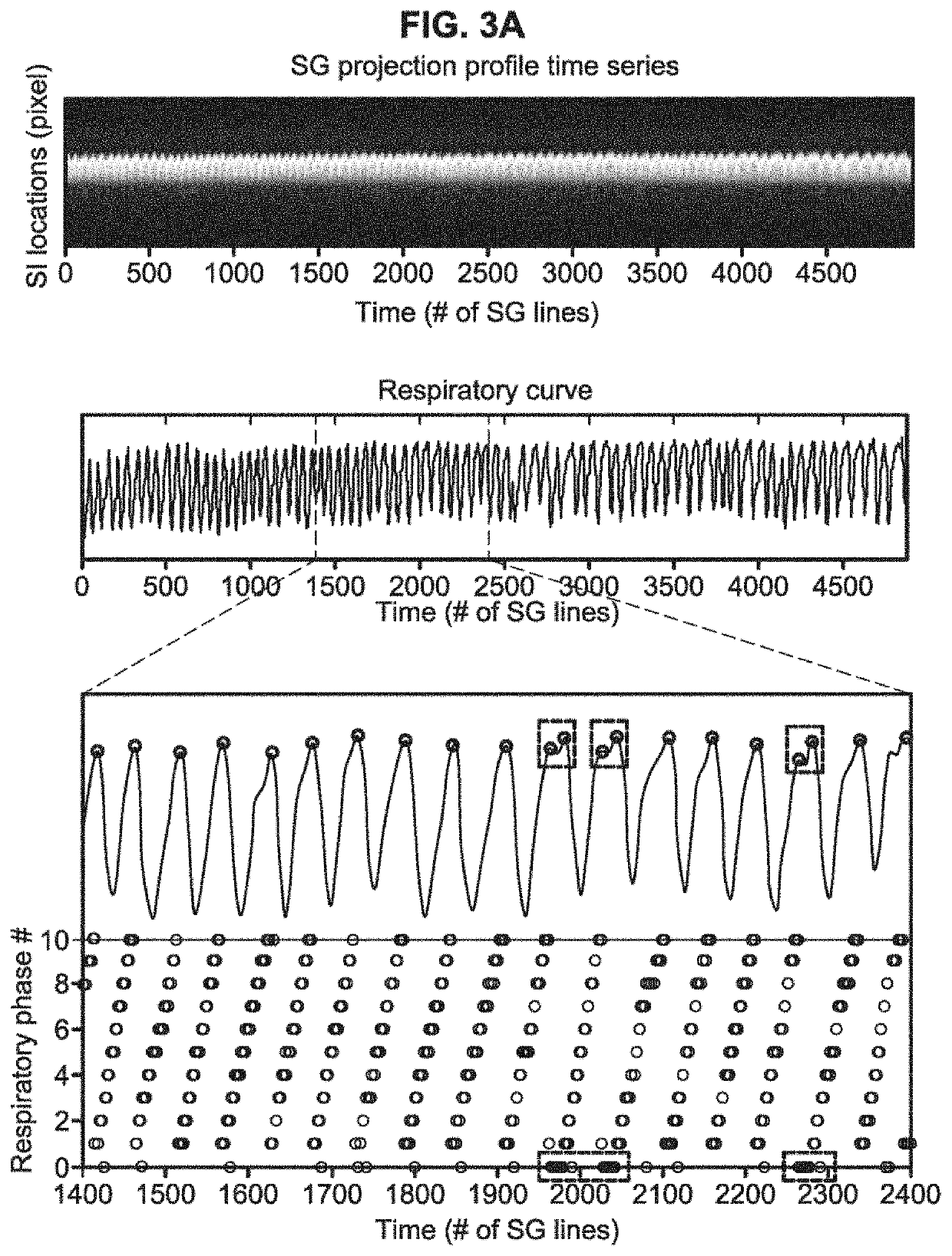Characterization of respiratory motion in the abdomen using a 4D MRI technique with 3D radial sampling and respiratory self-gating
a motion and abdominal organ technology, applied in the field of imaging methods and systems, can solve the problems of poor treatment outcomes, under-dosage in tumors and/or over-dosage in healthy tissues, and respiratory motion in abdominal organs poses significant challenges to accurate determination of treatment margins for target tumors
- Summary
- Abstract
- Description
- Claims
- Application Information
AI Technical Summary
Problems solved by technology
Method used
Image
Examples
Embodiment Construction
[0022]All references cited herein are incorporated by reference in their entirety as though fully set forth. Unless defined otherwise, technical and scientific terms used herein have the same meaning as commonly understood by one of ordinary skill in the art to which this invention belongs. Westbrook et al., MRI in Practice 4th ed., and Guyton and Hall, Textbook of Medical Physiology 12th ed., provide one skilled in the art with a general guide to many of the terms used in the present application.
[0023]One skilled in the art will recognize many methods and materials similar or equivalent to those described herein, which could be used in the practice of the present invention. Indeed, the present invention is in no way limited to the methods and materials described. For purposes of the present invention, certain terms are defined below.
[0024]Tumors that can be visualized and / or treated with radiation according to the embodiments described herein include those that are regularly shaped...
PUM
 Login to view more
Login to view more Abstract
Description
Claims
Application Information
 Login to view more
Login to view more - R&D Engineer
- R&D Manager
- IP Professional
- Industry Leading Data Capabilities
- Powerful AI technology
- Patent DNA Extraction
Browse by: Latest US Patents, China's latest patents, Technical Efficacy Thesaurus, Application Domain, Technology Topic.
© 2024 PatSnap. All rights reserved.Legal|Privacy policy|Modern Slavery Act Transparency Statement|Sitemap



